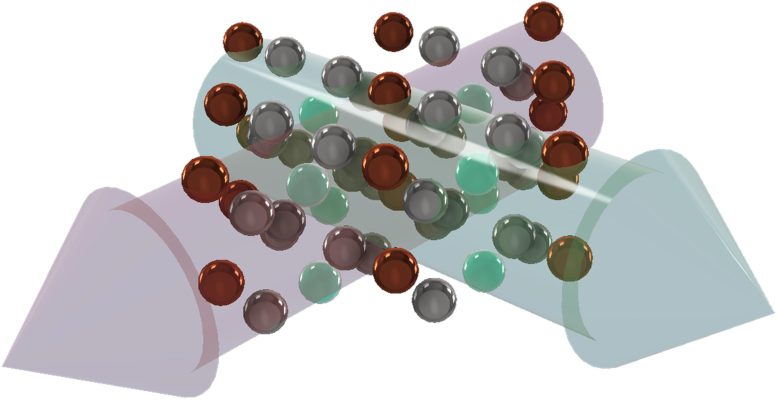
The direction of an electron spin is determined by the direction of motion of electrons. Credit: © Hans-Joachim Elmers / JGU
Researchers at Mainz University have been able to visualize the third class of magnetism, called altermagnetism, in action.
Ferromagnetism and antiferromagnetism have long been known to scientists as two classes of magnetic order of materials. Back in 2019, researchers at Johannes Gutenberg University Mainz (JGU) postulated a third class of magnetism, called altermagnetism. This altermagnetism has been the subject of heated debate among experts ever since, with some expressing doubts about its existence.
Recently, a team of experimental researchers led by Professor Hans-Joachim Elmers at JGU was able to measure for the first time at DESY (Deutsches Elektronen-Synchrotron) an effect that is considered to be a signature of altermagnetism, thus providing evidence for the existence of this third type of magnetism. The research results were published in Science Advances.
Altermagnetism – a new magnetic phase
While ferromagnets, which we all know from refrigerator magnets, have all their magnetic moments aligned in the same direction, antiferromagnets have alternating magnetic moments. Thus, at the macroscopic level, the magnetic moments of antiferromagnets cancel each other out, so there is no external magnetic field – which would cause refrigerator magnets made of this material to simply fall off the refrigerator door. The magnetic moments in altermagnets differ in the way they are oriented.
“Altermagnets combine the advantages of ferromagnets and antiferromagnets. Their neighboring magnetic moments are always antiparallel to each other, as in antiferromagnets, so there is no macroscopic magnetic effect, but, at the same time, they exhibit a spin-polarized current – just like ferromagnets,” explained Professor Hans-Joachim Elmers, head of the Magnetism group at JGU’s Institute of Physics.
Moving in the same direction with uniform spin
Electric currents usually generate magnetic fields. However, if one considers an altermagnet as a whole, integrating the spin polarization in the electronic bands in all directions, it becomes apparent that the magnetic field must be zero despite the spin-polarized current. If, on the other hand, attention is restricted to those electrons that move in a particular direction, the conclusion is that they must have a uniform spin.
“This alignment phenomenon has nothing to do with spatial arrangements or where the electrons are located, but only with the direction of the electron velocity,” Elmers added. Since velocity (v) times mass (M) equals momentum (P), physicists use the term “momentum space” in this context. This effect was predicted in the past by theoretical groups at JGU led by Professor Jairo Sinova and Dr. Libor Šmejkal.
Proof obtained using momentum electron microscopy
“Our team was the first to experimentally verify the effect,” said Elmers. The researchers used a specially adapted momentum microscope. For their experiment, the team exposed a thin layer of ruthenium dioxide to X-rays. The resulting excitation of the electrons was sufficient for their emission from the ruthenium dioxide layer and their detection. Based on the velocity distribution, the researchers were able to determine the velocity of the electrons in the ruthenium dioxide. And using circularly polarized X-rays, they were even able to infer the spin directions.
For their momentum microscope, the researchers changed the focal plane that is normally used for observation in standard electron microscopes. Instead of a magnified image of the surface of the ruthenium oxide film, their detector showed a representation of momentum space. “Differing momentums appear at different positions on the detector. Put more simply, the different directions in which the electrons move in a layer are represented by corresponding dots on the detector,” said Elmers.
Altermagnetism may also be relevant to spintronics. This would involve using the magnetic moment of electrons instead of their charge in dynamic random access memory. As a result, storage capacity could be significantly increased. “Our results could be the solution to what is a major challenge in the field of spintronics,” suggested Elmers. “Exploiting the potential of altermagnets would make it easier to read stored information based on the spin polarization in the electronic bands.”
References:
“Observation of time-reversal symmetry breaking in the band structure of altermagnetic RuO2” by Olena Fedchenko, Jan Minár, Akashdeep Akashdeep, Sunil Wilfred D’Souza, Dmitry Vasilyev, Olena Tkach, Lukas Odenbreit, Quynh Nguyen, Dmytro Kutnyakhov, Nils Wind, Lukas Wenthaus, Markus Scholz, Kai Rossnagel, Moritz Hoesch, Martin Aeschlimann, Benjamin Stadtmüller, Mathias Kläui, Gerd Schönhense, Tomas Jungwirth, Anna Birk Hellenes, Gerhard Jakob, Libor Šmejkal, Jairo Sinova and Hans-Joachim Elmers, 31 January 2024, Science Advances.
DOI: 10.1126/sciadv.adj4883
“Emerging Research Landscape of Altermagnetism” by Libor Šmejkal, Jairo Sinova and Tomas Jungwirth, 8 December 2022, Physical Review X.
DOI: 10.1103/PhysRevX.12.040501

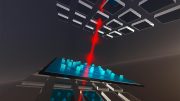

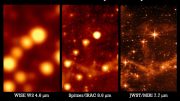

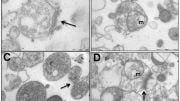


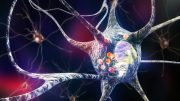
Where does diamagnetism fit into all this?
Please answer:
1. Why is physics so passionate about rotation today?
2. Is rotation related to gravitation?
3. Is mathematics and mathematical models scientific?
4. Is rotation in cosmos related to topological vortices?
5. Are gravitation, rotation, and topological vortices related?
6. Are magnetism, rotation, and topological vortices related?
7. Is low dimensional spacetime rotation related to high-dimensional spacetime rotation?
8. Are so-called academic journals (such as Physical Review Letters, Nature, Science, etc.) scientific and honest?
and so on.
Today, we have already entered the era of the internet. With the help of artificial intelligence and big data, discussions on scientific knowledge have become open and transparent. However, a group of editors of so-called academic journals (such as Physical Review Letters, Nature, Science, etc.) are mystifying themselves. They only care about their own so-called sufficiently high priority rating, general significance, discipline, novelty, etc., and do not care about what science and pseudoscience are.
Science and pseudoscience are not determined by a publication, an organization or a person, nor by you or me, but by mathematics the final say. Physical models must be based on mathematics or mathematical models in order to be scientific, convincing, and in accordance with natural laws.
The branch of mathematics known as topology has become a cornerstone of modern physics. The perpetually swirling topological vortices defy traditional physics’ expectations. A physical properties of topological vortices is their to spontaneously begin to change periodically in time, even though the system does not experience corresponding periodic interference. Therefore, in the interaction of topological vortices, time is both absolute and relative,and physics often requires treating space and time at the same level.
Low-dimensional spacetime matter is the foundation of high-dimensional spacetime matter. Low-dimensional spacetime matter (such as topological vortex) can form new material structures and derive more complex physical properties via interactions and self-organization. It is extremely wrong and irresponsible to imagine low dimensional spacetime matter using high-dimensional spacetime matter.
Science must follow mathematical rules. For example, the Standard Model (SM) is considered to be one of the most significant achievements of physics in the 20th century. However, the magnetic moment of μ particle is larger than expected, revealed by a g-2 experiment at Fermilab, suggests that the established theory (such as SM) of fundamental particles is incomplete. Furthermore, the SM omitting gravitation, it not involved the time problem and when the particle movement starts. Mathematics is the foundation of science. Physics must respect the scientific nature of mathematics and mathematical models. The SM must be based on mathematical models in order to be scientific, convincing, and in line with natural laws.
I hope researchers are not fooled by the pseudoscientific theories of the Physical Review Letters (PRL), and hope more people dare to stand up and fight against rampant pseudoscience.
The so-called academic journals (such as Physical Review Letters, Nature, Science, etc.) firmly believe that two high-dimensional spacetime objects (such as two sets of cobalt-60) rotating in opposite directions can be transformed into two objects that mirror each other, is a typical case of pseudoscience rampant.
If researchers are really interested in Science and Physics, you can browse https://zhuanlan.zhihu.com/p/643404671 and https://zhuanlan.zhihu.com/p/595280873.